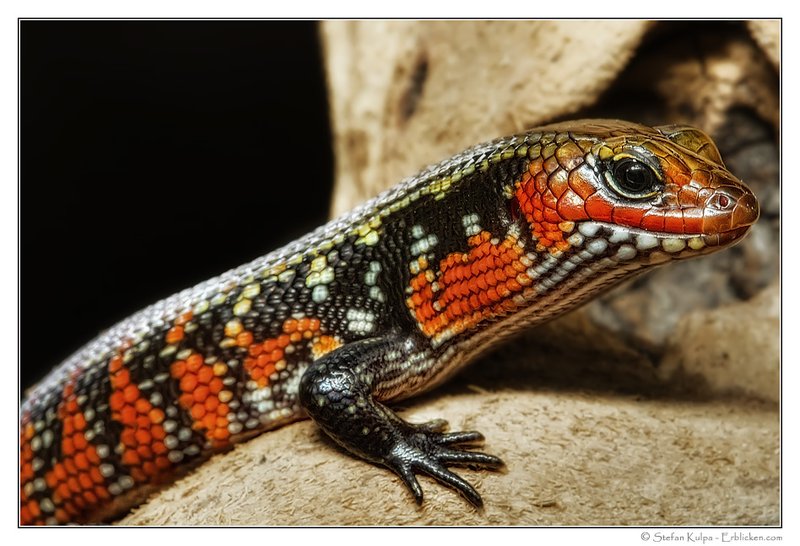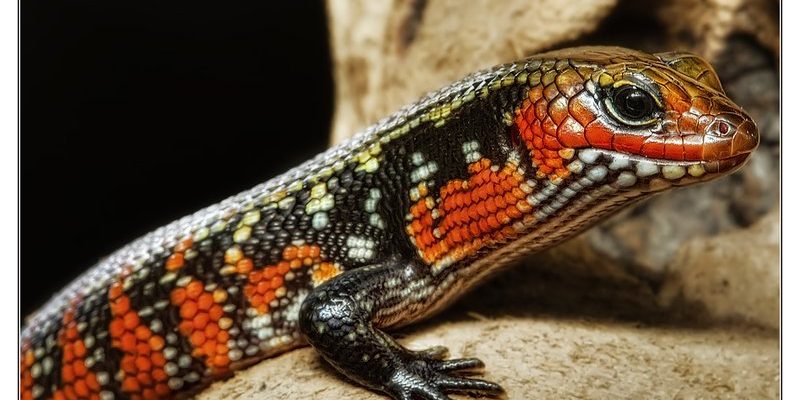
You might picture these skinks basking in the sun on a rock, but their homes vary greatly. Fire skinks, scientifically known as *Lamprophis fuliginosus*, primarily thrive in tropical and subtropical regions. Their habitats range from the lush rainforests of Africa to the dry savannas, demonstrating a remarkable adaptability. Let’s dig deeper into the intriguing world of fire skinks and explore their natural habitats around the globe.
1. Fire Skinks in Their Native Africa
Fire skinks are typically found in several countries across Africa, where they flourish in various ecosystems. Countries like Ghana, Nigeria, and the Democratic Republic of the Congo provide prime real estate for these reptiles. In these regions, you’ll find them hiding among rocks, leaf litter, and tree roots. They love warm, humid environments, which makes jungles and rainforests their ideal hangouts.
Their colorful patterns are not just for show; they help these skinks blend into their surroundings. Imagine a living candle flickering among the green leaves! Interestingly, fire skinks have also adapted the ability to thrive in a variety of habitats, from humid forests to dry scrublands. This adaptability is key for their survival, especially as their environments change with the seasons.
2. Rainforest Retreats
Rainforests are some of the richest and most diverse ecosystems on the planet, and fire skinks fit right in. These lush, vibrant environments provide everything a skink could desire: warmth, cover from predators, and plenty of food like insects and small invertebrates. Fire skinks are often spotted basking on low branches or skittering across the forest floor, showcasing their bright skin against the rich greens of their surroundings.
The dense foliage also serves as a perfect layer of protection. If a predator comes too close, these quick little reptiles can dart into a bush or hide beneath a log in the blink of an eye. Their bright coloring can be misleading; while they might seem like a target, it actually helps them escape detection in the dappled sunlight filtering through the trees.
3. The Savannas and Grasslands
Beyond the dense forests, fire skinks can also be found in Africa’s savannas and grasslands. These areas provide a different kind of habitat, characterized by open spaces filled with grasses and scattered trees. Here, fire skinks are adept at staying hidden among the tall grass. This adaptability plays a crucial role, especially during the dry season when food is less abundant.
In the savannas, fire skinks have developed a slightly different lifestyle. They are often more terrestrial, spending their time searching for insects and other small prey on the ground rather than climbing trees. You might be surprised to learn that their habitats can significantly influence their behavior and diet, showcasing just how versatile these little creatures can be.
4. Urban Adaptations
Interestingly, fire skinks are not solely confined to wild habitats. In some areas, they have learned to adapt to urban environments. As cities expand into their natural territories, these skinks have begun to thrive in gardens and parks. Their striking colors catch the eye, making them a delightful sight for those lucky enough to spot one during a stroll.
Urbanization brings fresh challenges but also opportunities. In gardens, they can find food in the form of insects and can use shrubs and garden decorations to hide from predators. This adaptability is a remarkable trait, highlighting the skink’s ability to coexist with humans despite habitat changes.
5. Fire Skinks in the Pet Trade
Due to their striking appearance and relatively easy care, fire skinks have become popular in the pet trade. However, it’s essential to remember that many of these skinks are wild-caught, which can impact their populations in the wild. Pet owners often source their fire skinks from various places, reflecting the diverse regions they inhabit.
When considering a fire skink as a pet, it’s crucial to understand its needs. These animals thrive in warm environments with plenty of hiding spots, mirroring their natural habitats. Whether you live in a cozy apartment or a spacious house, it’s important to create an environment that replicates their native surroundings as closely as possible.
6. Conservation Considerations
Fire skinks face challenges in the wild, especially from habitat loss and the illegal pet trade. Conservation efforts are vital to ensure that these wonderful reptiles continue to thrive in their natural habitats. Many organizations are working to protect their environments and raise awareness about the importance of maintaining biodiversity.
As reptile enthusiasts, we can play a part in this conservation effort. Choosing ethically sourced pets and supporting organizations that promote habitat preservation can help ensure future generations can appreciate these vibrant creatures.
Fire skinks are not just beautiful reptiles; they’re a testament to the diversity and resilience of life on Earth. Found in various habitats across Africa, from dense rainforests to grassy savannas, these skinks showcase nature’s adaptability. As you learn more about where fire skinks are found around the world, you might appreciate how interconnected our ecosystems are.
Next time you see a fire skink, whether in the wild or as a pet, take a moment to recognize the incredible journey it made to get there. From sun-soaked rocks to bustling urban gardens, the world is a vast and vibrant place filled with stories waiting to be discovered. So, here’s the thing: let’s keep the conversation going about these remarkable reptiles and their homes!

